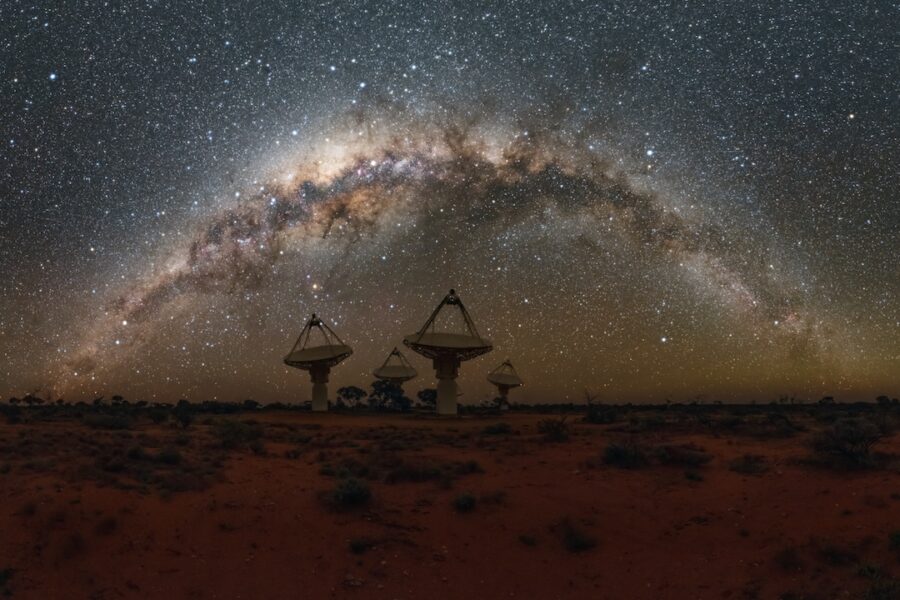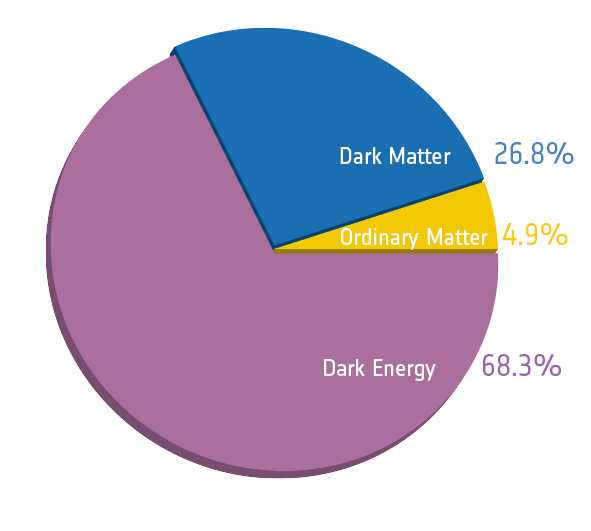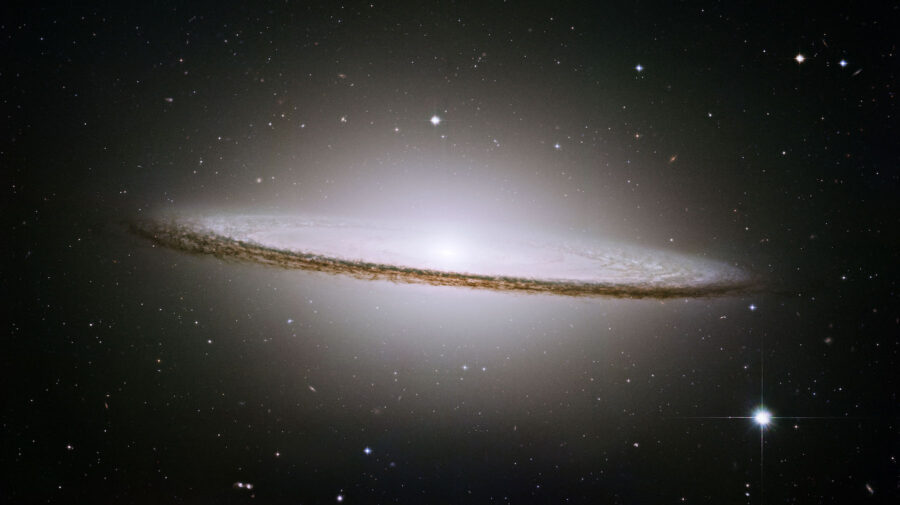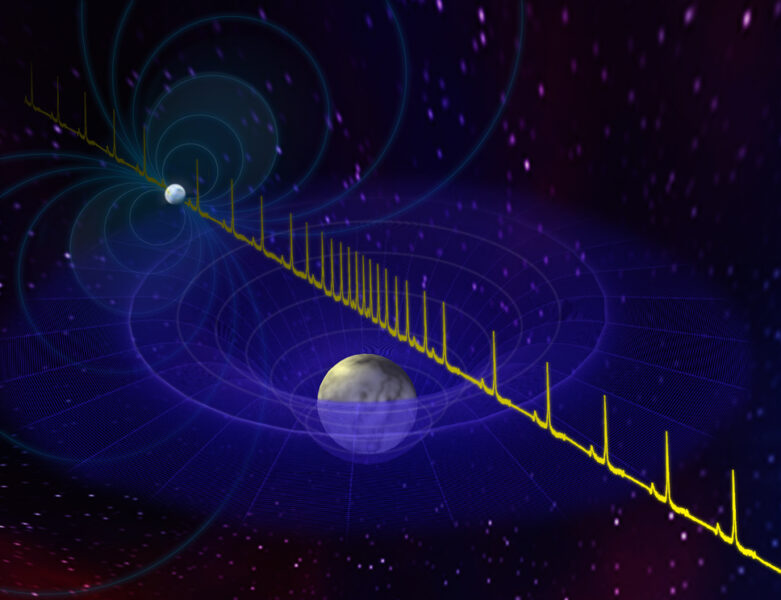Scientists are using radio emission from pulsars and fast radio bursts to probe the circumgalactic medium around the Milky Way.

CSIRO / Alex Cherney
The Earth, your body, and the electronic device you’re reading this on are all made up of ordinary, baryonic matter. A new study has now used bursts of radio emission to probe whether the outskirts of our galaxy are hiding vast quantities of “missing” baryonic matter.
Missing Matter
We’ve long known that only about 5% of the content of the universe is ordinary baryonic matter; the remainder is dark matter and dark energy. But when scientists have searched for this baryonic matter in the nearby universe, they found a puzzle: galaxies’ gas, dust, and stars only accounted for a small fraction of their expected baryonic matter.

ESA / Planck
Our own Milky Way is no exception — it also has a baryon fraction much lower than the overall baryon fraction in the universe. So where are its missing baryons? Were they expelled from our galaxy at some point in the past? Or did the Milky Way retain its baryons — but we haven’t detected them yet?
An Elusive Halo
If our galaxy’s baryons are still around, a likely hiding place is in the Milky Way’s outskirts, in the circumgalactic medium (CGM).
When our galaxy formed, gas was dragged inward with the collapsing dark-matter halo, shock heating and forming a surrounding bubble of hot, diffuse plasma — the CGM. This surrounding galactic halo may well contain our galaxy’s missing baryons today, but it’s very difficult to probe; since the gas is diffuse, we can’t measure it directly from within the Milky Way.

ESA / C. Carreau
A new study led by Emma Platts (University of Cape Town, South Africa) has instead measured the galactic halo’s matter by observing how distant signals interact with the CGM as they travel to us.
Clues from Transients
Platts and collaborators use two types of radio transients to measure CGM distribution: pulsars, which are pulsating neutron stars that reside in our galaxy’s disk, and fast radio bursts, which are brief flashes of radio emission that originate far beyond our galaxy.
Light from these sources travels across space to us, interacting with matter distributed along the way. The interactions slow down longer wavelengths of light more than shorter, causing the signal to spread out. The dispersion measure — the quantification of this spread — therefore tells us how much matter the signal traveled through to get to us.

Bill Saxton / NRAO / AUI / NSF
Probing Our Surroundings
By statistically analyzing the distribution of pulsar and fast radio burst dispersion measures, Platts and collaborators placed bounds on the Milky Way halo’s dispersion measure: its minimum is set by the farthest pulsars, which lie interior to the halo, and its maximum is set by the closest fast radio bursts, which lie far beyond our halo in neighboring galaxies.
So are the Milky Way’s missing baryons hiding in the CGM? We can’t say for certain yet, but the results suggest no, if the baryons are distributed in the same way as the dark matter. The future should hold more certainty though! Our sample of fast radio bursts is rapidly growing, and the authors estimate that once we’ve cataloged several thousand, we’ll be able to bound the content of the Milky Way’s halo more definitively.

Platts et al. 2020
Citation
“A Data-driven Technique Using Millisecond Transients to Measure the Milky Way Halo,” E. Platts et al 2020 ApJL 895 L49. doi:10.3847/2041-8213/ab930a
This post originally appeared on AAS Nova, which features research highlights from the journals of the American Astronomical Society.
 2
2
Comments
Yaron Sheffer
August 26, 2020 at 11:11 am
Great, now the baryons are missing. Are they simply invisible? Perhaps the Universe is made up of DARK energy, DARK matter, and DARK baryons? What next, DARK radiation and DARK photons? Oh, wait, they have papers about those, too...
You must be logged in to post a comment.
Andrew James
September 13, 2020 at 5:57 am
Science is based on evidence. If something is observed and shows unexplained or unknown behavior, then a proposed plausible theory is tested, ejected or adopted. "Oh, wait, they have papers about those, too..." is against this idea of science. Why?
You must be logged in to post a comment.
You must be logged in to post a comment.